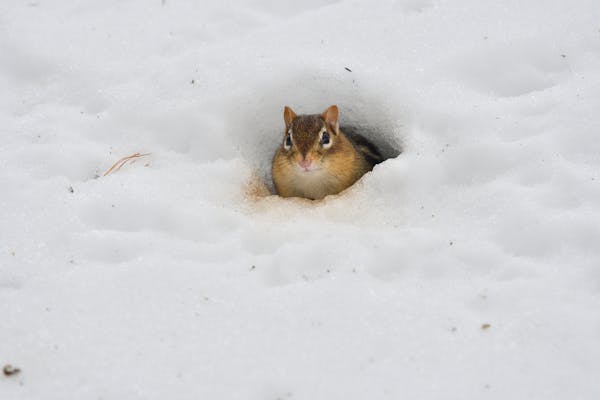A charismatic forest acrobat of Minnesota's North Woods is scarcely spotted.
Now, the mammal itself is more scarce in its core range, and researchers are trying to figure out the best method to stabilize its population.
A relative of the marten, badger and otter, fishers are a rarely seen member of the mustelid (or weasel) family, but some things are well-known: Long-tailed, long-bodied and agile, they're clawed fury on the forest floor and in the air, able to corral a vole or snowshoe hare or outclimb squirrels when it's mealtime.
Their Minnesota story matches other wildlife: It's one of cycles, and offers clues about the fisher's current struggle.
Massive logging in Minnesota at the end of the 19th century transformed the state's forests from old to young. Settlement and clearing changed the landscape, too. Older, larger trees have the capacity to form cavities that fishers rely on as dens for their litters. Coupled with trapping, the activity precipitated a massive decline of fishers (martens, too), which were almost nonexistent by 1930. Then, as forests aged over the next several decades, fishers and martens recovered, only to cycle downward again as Minnesota's forest industries expanded in the 1980s and '90s.
Over time, the Department of Natural Resources has shortened the trapping season and limit, still knowing trapping alone doesn't explain what's happening to the fisher.
Habitat questions haven't gone away. The DNR conducted research from 2008 to 2015, making clear that female fishers like to raise their kits in cavities in large trees. The dens are vital to fisher reproduction — but large, old trees are fewer in managed forests.
For the past two years, ecologist Michael Joyce and his team have wondered if artificial homes are viable. They have set up and monitored more than 110 wooden den boxes, knowing their use by fishers could indicate whether a lack of cavity trees is a factor. The main study areas are near Remer and Hoyt Lakes. More boxes will go up before the year is out.
In placing them, Joyce considers the forest's type and age and what might attract or dissuade fishers. Moderate habitat has a good canopy, which fishers like, and prey that would bring them to that stand. But age and tree type might be limiting. Red pine plantations, for example, don't live long enough to form good cavities. Good habitat has older trees such as aspen and oak capable of producing natural cavities. It also has ready food sources. Joyce had divided 92 boxes between the two habitats.
"If we put them in areas with good stands that just aren't old enough to have a cavity, can we enhance habitat value to fishers in those stands?" asked Joyce, who works for the Natural Resources Research Institute at the University of Minnesota Duluth.
John Erb, a longtime DNR furbearer research scientist in Grand Rapids, led the agency's long-term fisher study and is assisting Joyce. He said the den research stands to help other species, much the way wood duck nest boxes have aided waterfowl.
"Cavities unquestionably are a valuable resource in forests and not just for fishers. For a whole suite of species — ducks, squirrels, bats, martens, owls, some songbirds — so they are very valuable," he said.
In some of the state's managed forests there is a good amount of high-quality habitat, but Erb said finding the threshold for wildlife such as the fisher needs more study. Forest management matters, too, because younger forests bring along other obstacles: Bobcats are going to benefit at the expense of fishers. The two compete, often to the death, for food and habitat. Fishers aren't generalists like coyotes or raccoons, and they aren't a species that quickly recovers. "They need some specific features in the habitat, and they aren't real resilient," Erb said.
Joyce said fishers will need time to consider these human-made cavities. Female fishers almost exclusively give birth in cavities, usually in early to mid-March, averaging two to three kits. To date, many of the boxes have attracted fishers and other critters, but the weasels have yet to use them for litters. Joyce said there was a noticeable uptick in interest at boxes from fishers last summer into fall, a good harbinger.
"We've seen a lot of activity. We're hopeful that we will see our first litter or several litters this year," he said.
Despite their struggles, the mammals have expanded their range in small numbers in areas such as southern Minnesota. They're a curiosity for the public, which wonders about them when seeing the animal's tracks or the surprising photos captured by trail cams.
"They're fascinating," Erb said.

The Twins sell tickets with all-you-can-eat classic concession fare. Are they worth it?
Kansas adds AJ Storr after he led Wisconsin in scoring this season
Butler, Williamson injuries are part of story for Heat-Bulls and Kings-Pelicans play-in finales



